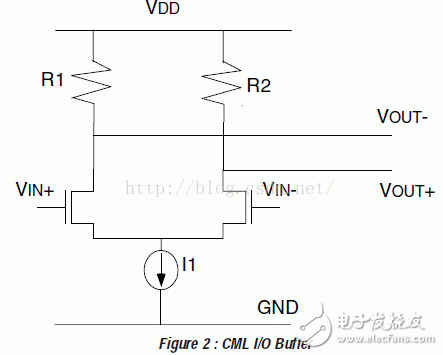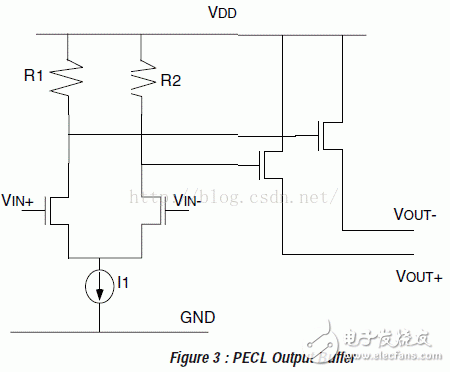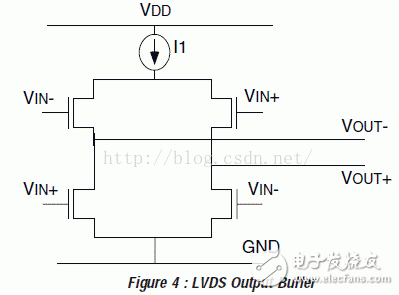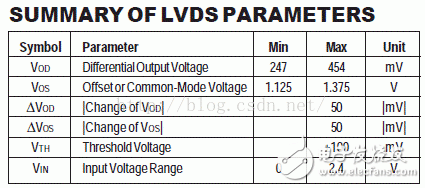2. Differential signal interface standard
CML (Current-mode llogic) It does not have a standard and is based on a simple differential amplifier, as shown in Figure 2. Usually take R1=R2=50 ohms, |VOUT+ - VOUT-| = R1 * i1 = 50*i1, different manufacturers i1 values ​​are different, so manufacturers with different voltage swings are different. Different manufacturers have different resistances. It is impossible to be a high-performance high-speed device. Another factor is the common-mode voltage. This is very important for DC coupling. The user must ensure that the transmitter and receiver common-mode voltages match, if it is AC-coupled. , the common mode voltage is not a problem.

PECL (posiTIve-emitter coupled logic) and LVPECL (low-voltagePECL), the basic structure is shown in Figure 3. The input buffer is the same as CML, and the output adds a common source amplifier. The output is open source. The user needs to increase the ground resistance to form an output signal externally. Like CML, there is no standard for PECL and LVPECL. Different manufacturers have different output voltage swings. The output voltage swing depends not only on the external resistor but also on the gate-level voltage of the common-source amplifier. Similar to CML, PECL and LVPECL require users to consider common-mode voltage, voltage swing, interchangeability, and so on. Compared with CML, because it has more common source amplifiers, it has lower output impedance than CML, so it can drive heavier loads. Using external resistors may be an advantage, allowing users to control output swing, power consumption, and termination. Match and so on.

LVDS (low-voltage differenTIal signaling), the basic structure of the circuit is shown in Figure 4. LVDS is standard (TIA/EAI-644). The load resistance between VOUT+ and VOUT- is typically 100 ohms. DC coupling is generally used.


Outdoor Rental LED Display is hot selling product in the led screen market. We usually use Nova MSD300 sending card and MRV328 receving card, other controll system also can be accepted, like Linsin,colorlight and so on.....About the led lamp, we use kinglight led lamp, IC is ICN2038S, refresh rate is 1920hz. We also provide other option if the client need higher quality, like Nationstar led lamp and refresh rate can make 3840hz. This 500x500mm LED display panel can also can make curved led display, ±15° flexible curved option.
Application:
* Business Organizations:
Supermarket, large-scale shopping malls, star-rated hotels, travel agencies
* Financial Organizations:
Banks, insurance companies, post offices, hospital, schools
* Public Places:
Subway, airports, stations, parks, exhibition halls, stadiums, museums, commercial buildings, meeting rooms
* Entertainments:
Movie theaters, clubs, stages.
Outdoor Rental LED Display,P3.91 Led Display,Led Advertising Display,Led Display Panel
Guangzhou Chengwen Photoelectric Technology co.,ltd , https://www.cwledpanel.com